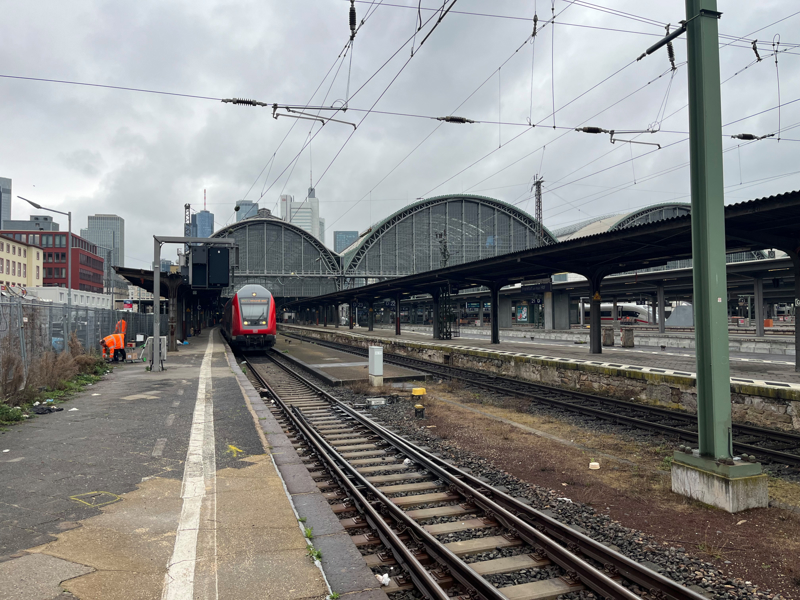
The owner of the HS1 route says there is a strong opportunity to expand the range of destinations from St Pancras, with demand for international rail travel set to triple.

The owner of the HS1 route says there is a strong opportunity to expand the range of destinations from St Pancras, with demand for international rail travel set to triple.
London St Pancras Highspeed (LSPH) published a study in mid-April saying the market for cross-Channel rail is set to rise from the current 11 million passengers a year to 35 million by 2040.
The study, produced by Steer, also said growth and competition could lead to fare reductions of up to 30%.
LSPH said HS1 currently operates at 50% capacity. At present, Eurostar runs two trains an hour, with LSPH saying up to 18 additional daily services could run on existing routes to Paris and Brussels.
“We know that public demand for international train travel is growing, with 60% of Londoners supporting a ban on short-haul flights where high-speed rail alternatives exist,” said LSPH Chief Operator Officer Richard Thorp.
“Leisure is a driving force, but we are also seeing signs that business travel by rail is growing, with companies encouraging staff to choose more sustainable options. Rail travel enables business travellers to remain connected and productive throughout their journey, making it a compelling alternative to flying.”
The study said four to five new destinations must be served to realise the full market potential. Eurostar services currently terminate at Paris, Brussels and Amsterdam, but Steer’s study highlighted locations such as Lyon, Marseille and Cologne as being within six hours of London.
It also listed Bordeaux, Toulouse, Dusseldorf, Dortmund, Frankfurt, Basel, Geneva and Zurich as places that could be reached within eight hours, although not all of these have the facilities to cope with cross-Channel services.
Thorp said: “We have begun exploring this with relevant infrastructure managers in some of the suggested destinations, and it will be a topic of focus for the coming years.”
At present, around 1,800 passengers per hour can be processed at St Pancras, which is one of the areas restricting growth that must be improved.
Thorp said last year’s capacity study identified “several opportunities” to increase that to nearly 5,000 per hour, adding: “There is enough space in the station, and a redesigned layout of the International Zone will allow us to accommodate the predicted growth.”
Earlier this year LSPH launched a RIBA 2 tender - a ‘concept design’ study to move to the next stage of capacity expansion which will determine how the International Zone will be reconfigured.
Applications closed in February and LSPH is currently selecting a firm.
Thorp also said that LSPH had been “closely following what airports are doing to optimise throughput”, as well as exploring new border control technology to increase efficiencies.
A new EU entry-exit system is also due to commence in October. LSPH said the kiosks have been installed, with Eurostar doubling the capacity of kiosks at the border.
Depot capacity must also be addressed to accommodate future growth.
In March, the Office of Rail and Road published a study it had commissioned which reviewed the potential capacity at Temple Mills International Depot. At least three potential rivals to Eurostar (Evolyn, Gemini Trains and Virgin) have submitted formal applications for access to Eurostar’s Temple Mills depot, with FS Italiane Group’s bid awaiting publication as this issue of RAIL went to press.
Eurostar has maintained there is no space for a second operator, but the report concluded there was some capacity for a rival, which would involve operational and infrastructure changes at the depot to fully realise.
With a maximum of 15 trains on site at any one time, that would leave little space for more to be accommodated should passenger numbers increase as forecast.
Thorp commented: “ORR’s findings demonstrate that there is spare capacity available at Temple Mills Depot and space is already safeguarded for future expansion.
“The depot was always designed to be a shared facility, and some of this spare capacity can be accessed without any changes. Further capacity can be unlocked through targeted upgrades and operational changes to internal reconfiguration of the depot, and additional ancillary facilities such as new office and storage space being built. “
Campaign for Better Transport has published its own study that predicts similar growth for HS1.
It also said the reopening of Ashford and Ebbsfleet International stations “should be a priority”, having been disused since 2020 and with Eurostar claiming it “cannot justify the additional expense of providing border controls at the two stations, with lower passenger numbers than at St. Pancras”.
CBT said it was “illogical and inconvenient” for Kent-based passengers to travel into London and out again.
Thorp said LSPH was encouraging Eurostar and potential rivals “to consider serving the stations in Kent. Ultimately, the decision rests with the operators.”
He added: “We recently launched a Growth Incentive scheme for existing and potential operators of cross-Channel services which recognises the intermediate stations as new destinations, offering discounts on services that stop at the stations in Kent.”
Login to continue reading
Or register with RAIL to keep up-to-date with the latest news, insight and opinion.


















Login to comment
Comments
No comments have been made yet.